
ver.20221202E
Resonac Corporation (https://www.shodex.com/)
1
Operation Manual
Shodex SUGAR SH1011, SH1821
(Please read this operation manual carefully to achieve the best and consistent column performance for a long time.)
Important Handling Instructions
Caution! · Please consult the Safety Data Sheet (SDS) of reagents and solvents used with the column
and understand their proper handling methods to prevent potential health hazards or death
from occurring.
· Please wear appropriate personal protective equipment such as lab goggles and gloves
when handling organic solvents and acid and alkaline reagents. Avoid any direct physical
contact to prevent chemical injuries.
Before Using the Column
(1) Please visually inspect the column package and the column surface for any damage.
(2) Please check the product name and serial number (Serial no. or S/N) written on the column package and
adhesive label on the column body.
(3) Please download the Certificate of Analysis (CoA) for the purchased product. The CoA can be downloaded
from Shodex website (https://www.shodex.com/download/). You will be asked to enter the serial number.
1. Introduction
Thank you for purchasing the Shodex product. Shodex SUGAR SH1011 and SH1821 are high performance
chromatography columns which are specifically designed for separation and analysis of sugars and organic
acids. A strong acid cation exchange type packing gel, prepared from a rigid resin of styrene divinylbenzene
copolymer provides a mixed separation mode. The analytes are separated by a combination of ion exclusion
chromatography and size exclusion modes. It is capable of separating and analyzing sugars and organic acids
simultaneously.
2. Column Components
Please refer to the Shodex website: https://www.shodex.com/en/da/07.html
3. Column Specifications
Product
Code Product Name
Column Size
(mm) Particle size
(μm)
Theoretical Plate
Number
(Per Column)
Exclusion Limit*
I.D. Length
F6378100 SUGAR SH1011 8.0 300 6 ≥ 17,000 1,000
F6378101 SUGAR SH1821 8.0 300 6 ≥ 17,000 10,000
F6700080 SUGAR SH-G 6.0 50 10 (Guard Column) -
* Reference value only / Measured with pullulan
Base Material
: Spherical porous particles of styrene divinylbenzene copolymer modified with sulfo group
(counter ion: H
+
)
Column Housing
: SUS-316
Screw Type
: Internally-threaded type No.10-32 UNF
Shipping Solvent
: Water

ver.20221202E
Resonac Corporation (https://www.shodex.com/)
2
4. Usable Conditions
* The modified sulfo group may act as a decomposition catalyst for some sugars including sucrose and raffinose. This effect
is larger at the higher temperature (more decomposition). If analysis of those sugars cannot be avoided, it is recommend
to set the column temperature under 40 °C.
Usable solvents are listed below.
(1) The standard eluent is an acidic aqueous solution.
(2) Usable acids include sulfuric acid and phosphoric acid. The standard concentration of sulfuric acid is 5 mM
and its maximum usable concentration is 25 mM.
(3) Organic solvents cannot be added.
Caution! · After using a strong acidic eluent such as sulfuric acid solution, wash the HPLC system
and the column thoroughly. If left, the metal parts of the system and/or the column may
react with the acid and generate hydrogen gas.
Attention! · Use the column within above stated flow rate, pressure, and temperature ranges. Using
the column outside the given range may damage the column and lower its performance.
· Column pressure is influenced by eluent composition, flow rate, and column temperature.
When changing the eluent compositions, adjust the flow rate and column temperature so
that the column pressure remains below the usable maximum pressure.
· Do not use hydrochloric acid as it corrodes stainless steel.
5. Eluent Preparation
(1) Degas the eluent fully to prevent the formation of air bubbles.
(2) Presence of small debris or insoluble substances may result in deterioration of columns and/or they may
appear as noise on chromatograms. Filter the eluent with a 0.45-μm disposable filter to prevent the problems
from occurring.
Attention! · Whenever water is required, use ultra-pure water freshly generated by a water purification
system or water from a newly opened HPLC grade distilled water bottle. Use of HPLC
grade organic solvent of guaranteed quality, which can be used without problems in HPLC
is recommended. If organic solvent with different grades are used together, make sure that
their qualities are all suitable for the analysis prior to the use. Solvents left in opened bottles
for a long time should not be used. The content may have been changed, absorbed
moisture, or has been contaminated.
· Always use freshly prepared solvents. Solvents stored for a long time may have changed
their compositions and may influence elution patterns and/or damage the column.
Note · Use of an on-line degasser is recommended.
6. Sample Preparation
(1) If possible, use the eluent for analysis to dissolve or dilute samples. If this is difficult, use a solvent which
has a composition that is as close as possible to the eluent composition and which fully dissolves or dilutes
the sample. For gradient elution, samples are recommended to be dissolved or diluted using the eluent used
at the beginning of the gradient method.
(2) Filter diluted sample solutions using disposable 0.45-μm filters to prevent the column from clogging or
deteriorating.
(3) Suggested injection volume is less than 20 μL per column.
(4) When analyzing a basic sample, make sure to neutralize the sample prior to the injection.
Product Name Flow Rate (mL/min) Maximum
Pressure
(MPa/column)
Temperature (°C)
Recommended Maximum Recommended* Maximum
SUGAR SH1011 0.5 - 1.0 1.5 5.0 50 - 60 95
SUGAR SH1821
SUGAR SH-G - - -

ver.20221202E
Resonac Corporation (https://www.shodex.com/)
3
(5) When a sample contains cations (the pretreated sample after neutralization), remove them by using a cation
exchange resin.
(6) When a sample contains protein or lipid, make sure to remove them prior to the injection. Proteins may be
removed by ultrafiltration or by adding acid.
(7) When a sample contains a large amount of organic acids, use an OH-form anion exchange resin to remove
them.
(8) When a sample contains hydrophobic substances or surfactants, use a reversed-phase solid phase
extraction to remove them.
Attention! · When a sample is dissolved in a solvent other than the eluent and if the sample matrix
contains components which do not dissolve in the eluent fully, precipitates may form and
clog the column.
· Full column performance may not be achieved if a sample concentration is higher or
sample injection volume is larger than it should be. It may lead to abnormal peak shapes,
poor separations, and/or low reproducibility. In such cases, please adjust the sample
concentration and/or the injection volume.
Note · Use of a guard column is recommended to protect the analytical column.
7. Column Usage Procedure
7.1 HPLC System Preparation
Wash the entire HPLC system prior to column installation, including all flow-lines and sample loop by switching
the valves, and then replace the washing solution with the eluent to be used. If desired new eluent has low
miscibility/solubility to the eluent of previous analysis, first use the eluent that is miscible/soluble to both eluents,
and then replace it with the desired eluent.
Attention! · If the eluent left in the HPLC system is not compatible with the column to be used, it may
damage the column.
· A drastic change in the eluent compositions may remove substances adsorbed on the
HPLC system and they may enter and deteriorate the column.
7.2 Column Installation
(1) Connect the column to HPLC system by following the “flow direction arrow” (➡) indicated on the column
adhesive label. If a guard column is used, position the guard column in front (before the inlet) of the analytical
column.
(2) Make sure to insert the tubing all the way to the end fitting and secure it with the male nut. It is important that
there is no extra space between the tubing and the column side of the end fitting. Presence of an extra space
will let the sample to spread out and may result in wide peaks.
(3) Set the initial flow rate at 0.2 to 0.3 mL/min and start the system. If the column is to be heated during the
analysis, keep the low flow rate until the column temperature reaches to the set temperature, and then
gradually increase the flow rate to the desired.
(4) At the end of analysis, reduce the flow rate to 0.2 to 0.3 mL/min and turn the column oven off. Make sure
that the column oven temperature is at room temperature before turning off the pump.
Caution! · Verify that there is no solvent leak. The solvent leak may cause electronic leakage, rust,
and/or chemical injury.

ver.20221202E
Resonac Corporation (https://www.shodex.com/)
4
Attention! · Make sure not to let air bubbles enter the column while installing the column. The air
bubbles may damage the column.
· When restarting the system after column installation or after holding the eluent flow, start
the system at 0.2 to 0.3 mL/min flow rate. A rapid increase in pressure can damage the
column.
· If the pump was stopped while the eluent inside the column is still hot, the eluent volume
decreases and creates an empty space when the eluent temperature decreases. This may
create an empty space in the column and may deteriorate the column.
Note · It is recommended to set the pump limiter to avoid exceeding the maximum pressure.
7.3 Solvent Exchange
To replace the solvent, set the column temperature at 50 oC and start the system at 0.2 to 0.3 mL/min flow
rate. Recommended solvent volume to introduce at each step is 3 to 5 times of the column volume.
Attention! · Frequent eluent replacement may damage the column, and thus not recommended.
7.4 Column Cleaning (Regeneration)
Problems in peak shapes and elution time changes or elevated column pressure are often caused by the
deposition of insoluble or adsorbing components from the sample/flow-line inside the column. These problems
may be resolved by cleaning (regenerating) the column.
If a guard column is used with an analytical column(s), first remove the guard column and check the
performance of the analytical column alone. If the problem is solved, most likely the cause was from the guard
column. In this case, clean (regenerate) the guard column.
If the problem remains even after removing the guard column, clean (regenerate) both guard and analytical
columns. Make sure to clean (regenerate) the guard and the analytical columns separately. In case multiple
number of analytical columns are used together, wash (regenerate) them separately. During the column cleaning
(regeneration), disconnect the detector and collect the washing solution directly from the column outlet into a
waste container (i.e., do not let the solution go through the detector).
If the column performance does not improve (recover) after performing the column cleaning (regeneration),
please replace the column with a new one.
<Cleaning method>
Insoluble components that block the column inlet may be removed by reversing the flow direction, i.e.,
introducing the eluent from the column outlet, with flow rate at less than half of the recommended flow rate.
<Regeneration Method>
Cations present in the sample may attach to the packing material. This can change the separation patterns
and peak shapes. Following regeneration procedure may resume the column performance.
Set the column temperature at 50 °C and the flow rate at 0.5 mL/min. Introduce 50 mL of 25-mM aqueous
sulfurinc acid solution.
Attention! · Keeping the regeneration solution in the column for a long time will lead to column
deterioration. Please replace the regeneration solution with the eluent immediately after
cleaning.
8. Column Storage
Remove the column from HPLC system after replacing the in-column solvent with the initial shipping solvent.
Securely tighten the end caps and store the column at a location with stable temperature (a cool and dark space
is recommended). Refer to section 7.3 Solvent Exchange for how to replace the eluent.
Attention! · Never allow inside the column to dry. It can damage the column.

ver.20221202E
Resonac Corporation (https://www.shodex.com/)
5
9. Column Inspection
Please refer to the inspection method described in the CoA. At Shodex, “half width method” is adopted for the
calculation of plate count and “asymmetry factor (Fas)” is adopted for the calculation of peak symmetry. Please
refer to the Shodex website for the detail: https://www.shodex.com/en/da/07.html
Attention! · Plate count and Fas values change significantly depend on samples and/or analysis
conditions being used. To check the initial column condition, please make sure to use the
same sample and the analysis condition mentioned in the CoA.
10. Additional Warnings
(1) Do not remove end fittings.
(2) Do not make a strong impact on the column. Do not drop or hit the column on a hard surface.
(3) Please follow a proper waste disposal method specified by your local regulations.
Please refer to the Shodex website (https://www.shodex.com/) for product details and their applications. For
additional assistance, contact the distributor from whom you purchased the column or contact your regional
Shodex support office (https://www.shodex.com/en/support_office/list).
-
 1
1
-
 2
2
-
 3
3
-
 4
4
-
 5
5
Shodex SH1011 (SUGAR) Operating instructions
- Type
- Operating instructions
- This manual is also suitable for
Ask a question and I''ll find the answer in the document
Finding information in a document is now easier with AI
Related papers
-
Shodex SZ5532 (SUGAR) Operating instructions
-
Shodex KS-801 (SUGAR) Operating instructions
-
Shodex SC1011-7F (EP) Operating instructions
-
Shodex DC-613 (RSpak) Operating instructions
-
Shodex SH1011 8C (SUGAR) Operating instructions
-
Shodex SP0810 8C (SUGAR) Operating instructions
-
Shodex YS-50 (IC) Operating instructions
-
Shodex SP0810 (SUGAR) Operating instructions
-
Shodex P-421S (CXpak) Operating instructions
-
Shodex VG-50 4E (HILICpak) Operating instructions
Other documents
-
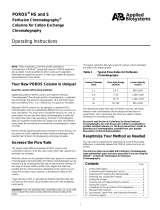 Thermo Fisher Scientific POROS® HS and S Perfusion Chromatography® Columns Operating instructions
Thermo Fisher Scientific POROS® HS and S Perfusion Chromatography® Columns Operating instructions
-
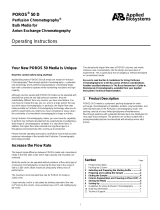 Thermo Fisher Scientific POROS® 50 D Perfusion Chromatography® Bulk Media Operating instructions
Thermo Fisher Scientific POROS® 50 D Perfusion Chromatography® Bulk Media Operating instructions
-
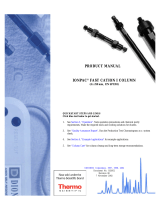 Thermo Fisher Scientific IonPac Fast Cation I Columns User manual
Thermo Fisher Scientific IonPac Fast Cation I Columns User manual
-
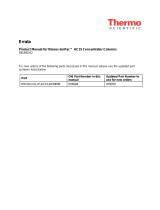 Thermo Fisher Scientific IonPac AC15 Concentrator Column User manual
Thermo Fisher Scientific IonPac AC15 Concentrator Column User manual
-
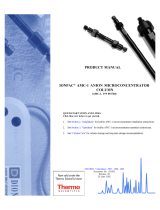 Thermo Fisher Scientific IonPac AMC-1 Anion Microconcentrator Column User manual
Thermo Fisher Scientific IonPac AMC-1 Anion Microconcentrator Column User manual
-
 Thermo Fisher Scientific IonPac Cation Polisher User manual
Thermo Fisher Scientific IonPac Cation Polisher User manual
-
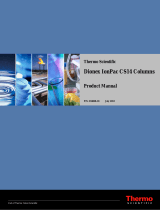 Thermo Fisher Scientific IonPac CS14 Columns User manual
Thermo Fisher Scientific IonPac CS14 Columns User manual
-
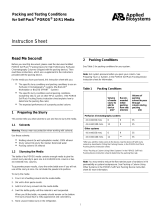 Thermo Fisher Scientific Packing and Testing Conditions Instruction Sheet
Thermo Fisher Scientific Packing and Testing Conditions Instruction Sheet
-
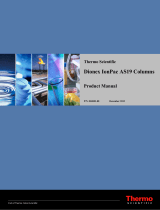 Thermo Fisher Scientific Dionex IonPac AS19 Columns User manual
Thermo Fisher Scientific Dionex IonPac AS19 Columns User manual
-
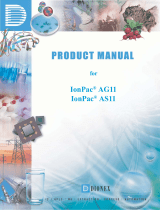 Thermo Fisher Scientific IonPac AG11 and AS11 User manual
Thermo Fisher Scientific IonPac AG11 and AS11 User manual














